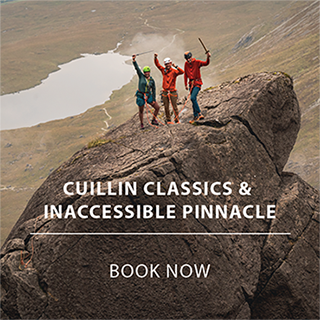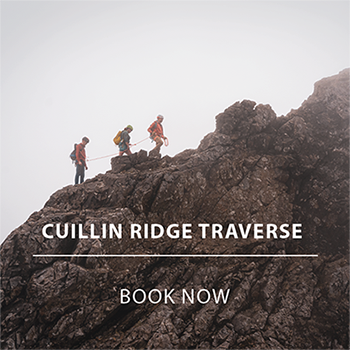The Cuillin Ridge Traverse, Skye, Scotland
The Cuillin Ridge Traverse - the most desirable mountaineering objective in the UK.
What are the hardest parts of a Cuillin Ridge Traverse?
The climbs are the hardest from a purely technical point of view – the most difficult of which is the TD Gap (Severe, 20m), then Naismith’s Route (Severe, 45m), then Kings Chimney (VDiff, 25m), and finally the easiest is the Inaccessible Pinnacle (Moderate, 65m).
These are all, strictly speaking – avoidable for those doing a ridge traverse, although missing out the Inaccessible Pinnacle would be a shame unless ques prevent it.
Many people are surprized to learn the In Pinn is not the hardest unavoidable part of the ridge – that accolade belongs to the Second Top of Sgurr a’Mhadaidh (Difficult).
Beyond technicality, the sustained exposure, fitness requirements, intricate route finding and lack of water on the ridge are all wider challenges to be considered.
How difficult is the Cuillin Ridge?
The scrambling grade of the Cuillin Ridge Traverse is 3, with the commonly pitched climbs on the ridge ranging from Moderate to Severe, and multiple short sections of straightforward climbing at Moderate and Difficult.
However, the Cuillin Traverse is hard to fully capture in traditional UK grades – due to it’s length (12km, 3000m+ height gain) and sustained nature – and it is realistic to compare more to longer Alpine routes such as the Matterhorn Hornli Ridge than a traditional UK scramble.
On the other hand, it is readily escapable on numerous occasions throughout.
How fit do I have to be?
Fit enough to able to sustain 3000m of height gain over 2 days, carrying overnight kit and able to move efficiently on graded ground.
Can you do the Cuillin Ridge without ropes?
Exceptionally confident scramblers and climbers solo the ridge each year – but this is not the norm and certainly not the case for guided parties, where guides strive for the highest levels of safety. Some individual peaks, namely - Bruach na Frithe and Sgurr na Banachdich - can be done unroped via the voie normal, and indeed long sections of the main ridge traverse may also be unroped if weather, ability and tiredness permit.
How long does it take to climb the Cuillin Ridge?
- One day: for those who can move swiftly over graded ground – typically requiring minimal short roping in a guided context. Times of 15-19 hours are commonplace, and if anticipating over 19 hours then perhaps an overnight bivi would be advisable instead
- Two days: for the vast majority, 2 days allows for bad weather and the associated slower speed moving over wet rock. In addition, having 6-9 hours of bivi time allows the mind and body to recuperate and stay focused for the demands of the second day
- Three days: in exceptional cases this may be most appropriate for the slowest parties – why rush?
The best way to see where you are at is to come on a Scrambling in Snowdonia course first, or book a taster day on our Cuillin Classics & Inaccessible Pinnacle







